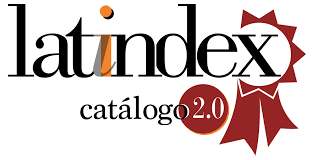Envíos
Lista de comprobación para la preparación de envíos
Como parte del proceso de envío, los autores/as están obligados a comprobar que su envío cumpla todos los elementos que se muestran a continuación. Se devolverán a los autores/as aquellos envíos que no cumplan estas directrices.- El envío no ha sido publicado previamente ni se ha sometido a consideración por ninguna otra revista (o se ha proporcionado una explicación al respecto en los Comentarios al editor/a).
- El archivo de envío está en formato OpenOffice, Microsoft Word, RTF o WordPerfect.
- Siempre que sea posible, se proporcionan direcciones URL para las referencias.
- El texto tiene interlineado sencillo; 12 puntos de tamaño de fuente; se utiliza cursiva en lugar de subrayado (excepto en las direcciones URL); y todas las ilustraciones, figuras y tablas se encuentran colocadas en los lugares del texto apropiados, en vez de al final.
- El título, el resumen y las palabras claves se incluyen tanto en español como en inglés.
- El texto se adhiere a los requisitos estilísticos y bibliográficos resumidos en las Directrices del autor/a, que aparecen en Acerca de la revista.
Aviso de derechos de autor/a
Las obras se publican en la edición electrónica de la revista bajo una licencia Creative Commons Reconocimiento-NoComercial-SinObraDerivada 4.0 España: se pueden copiar, usar, difundir, transmitir y exponer públicamente, siempre que:
- Se cite la autoría y la fuente original de su publicación (revista, editorial y URL de la obra).
- No se usen para fines comerciales.
- Se mencione la existencia y especificaciones de esta licencia de uso.
Declaración de privacidad
El responsable del tratamiento de los datos de carácter personal aportados para las revistas a las que da acceso Revistas UPO es la revista Meldar: Revista internacional de estudios sefardíes. Para consultar la información adicional y detallada sobre protección de datos puede ponerse en contacto con la revista Meldar: Revista internacional de estudios sefardíes dirigiéndose a la dirección indicada en “acerca de/contacto”.
Asimismo, se le informa que la Universidad Pablo de Olavide actúa como Encargado de Tratamiento de cada uno de los ficheros cuya titularidad es de las diferentes revistas. Por tanto, la Universidad Pablo de Olavide, facilita el ejercicio de sus derechos de acceso, de rectificación, de supresión, a la limitación del tratamiento, a la portabilidad de los datos, de oposición y a no ser objeto de decisiones individuales automatizadas, incluida la elaboración de perfiles dirigiéndose a la sede de la Universidad Pablo de Olavide, sita en Ctra. de Utrera, km. 1 41013, Sevilla (ES), o bien solicitándolo por email a la dirección deleg.protecciondedatos@upo.es, acompañando acreditación de su identidad.



 @meldar__
@meldar__


